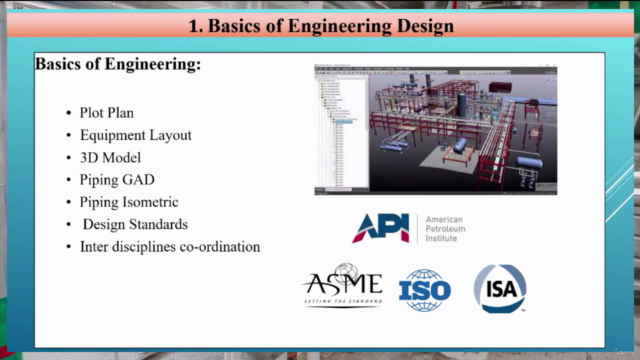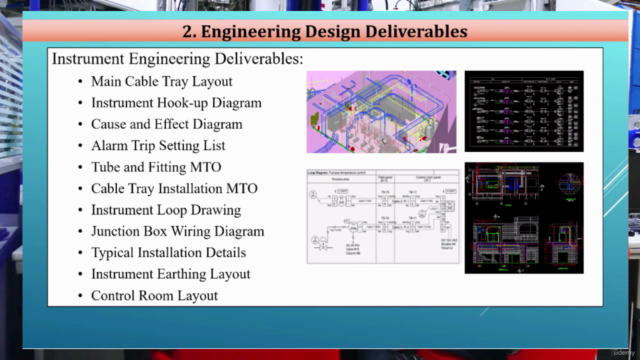Instrumentation Design, Deliverables & Detailed Engineering

Why take this course?
🎓 Complete Course: Mastering Instrumentation Design, Deliverables & Detailed Engineering
Course Objective 🚀
The primary goal of this comprehensive course is to equip candidates with a detailed understanding and practical skills in the discipline of Instrumentation Design Engineering. Our objective is to facilitate faster learning curves for professionals working in the Oil & Gas sector, ensuring they can navigate the complexities of instrumentation design with confidence.
What you'll learn:
- Gain a solid foundation in the principles and concepts of Instrumentation Design & Detailing for the Energy Sector.
- Understand the critical role of instrumentation engineers in ensuring process control and safety in high-risk industries.
- Learn how to design, detail, maintain, and troubleshoot control systems effectively.
Why Study Instrumentation Engineering? 📈
Instrumentation and Control are indispensable in the analysis, measurement, and control of industrial processes. As an instrumentation engineer, you'll be at the forefront of ensuring that processes run efficiently and safely, with a focus on making safety a top priority.
Course Highlights:
- Understanding of Instrumentation Engineering: Delve into the world of sensors, analyzers, P&ID, and their application in real-world scenarios.
- Practical Design Skills: Learn to create detailed design deliverables that are crucial for successful instrumentation projects.
- Safety First: Emphasize on safety measures and compliance requirements in all aspects of instrumentation design.
Course Contents: Engineering Design Deliverables 🛠️
This course will cover a wide range of deliverables that are essential for an instrumentation engineer:
- Instrument Index: A comprehensive guide to all instruments used in the system.
- IO (Input/Output) Database: Detailed database for efficient management and coordination of data.
- Instrument Location Plan: Strategic planning for optimal placement of instruments.
- Junction Box Specifications: Including vendor offers and detailed drawings.
- Air Manifold Specification: With vendor offer and precise drawings.
- Cable Specifications: Complete with vendor offer and diagrams.
- Instrument Hook-Up Drawings: Precision drawings for accurate instrument connections.
- Cause & Effect Diagram: Analyze potential issues and their effects on the system.
- Alarm Trip Setting List: Configuration of alarms and trip settings for safety and efficiency.
- Junction Box Wiring: Detailed wiring diagrams for effective connections.
- Cable Schedule: Organize cables based on specifications, routes, and connections.
- Air Manifold Schedule: Plan for air supply requirements in the system.
- Junction Box Layouts: Design layouts for optimal space utilization.
- Air Manifold Layouts: Organize air manifolds to ensure system efficiency and safety.
- Cable Tray Specification: Including vendor offer, General Arrangement Drawings (GAD), and specifications.
- Level Sketch: Accurate sketches for level measurements and control.
- Instrument Air Consumption: Calculate and optimize air consumption for the system.
- Instrument Power Consumption: Optimize power usage for energy efficiency.
- Bulk MTO (Material Take-Off): Complete material listings for project requirements.
By the end of this course, you will have a comprehensive understanding of the design principles and deliverables necessary to excel in the field of Instrumentation Design Engineering for the Oil & Gas Energy Sector. Join us on this journey to master the intricacies of instrumentation design and contribute to safer, more efficient processes! 🏭♻️🚀
Course Gallery




Loading charts...